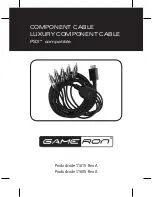
RSCC Wire & Cable LLC © 2015 • 20 Bradley Park Road • East Granby, CT 06026 • 800-327-7625 • 800-653-8300 • Fax: 860-653-8321 • www.vitalinkcable.com
27
Cables should be placed neatly, and orderly
across the full width of the tray to maintain a
uniform level. The cable should be properly
spaced for ampacity concerns. Cables should
be segregated by voltage level (such as medi-
um voltage and low voltage cables) and sepa-
rated by function (i.e., power and instrument
cables should be installed in separate trays).
During installation, where a cable rests on a tray
side rail, such as at cable exit points, temporary
tray edging should be used to protect cable. If,
after the cable is installed, the cable rests on
the side rail then permanent tray edging should
be provided. Material used for tray edging
should be fire retardant, have a large surface
area, be compatible with the installation, and
have a suitable temperature rating.
Cables installed in trays having an expansion
gap or fitting (to accommodate differential move-
ment) should be placed in the tray in such a
manner that a slack section of cable is present.
The expansion gap allows for free movement of
the trays without damage to the cable. The
cables should not be tied down within five feet
of each side of the gap.
In Concrete
VITALink MC may be installed in conduit in con-
crete or earth. Refer to the section on installa-
tion in raceway and installation in earth as
applicable. Minimum burial depth should be
per Table 300.5 of NEC or as applicable CEC
requirement.
VITALink MC may also be embedded in
concrete. Consult the RSCC Engi
neering
Department for further information on these
methods of installation.
Other Installations
Contact the RSCC Engin eering Department for
recommendations.















































